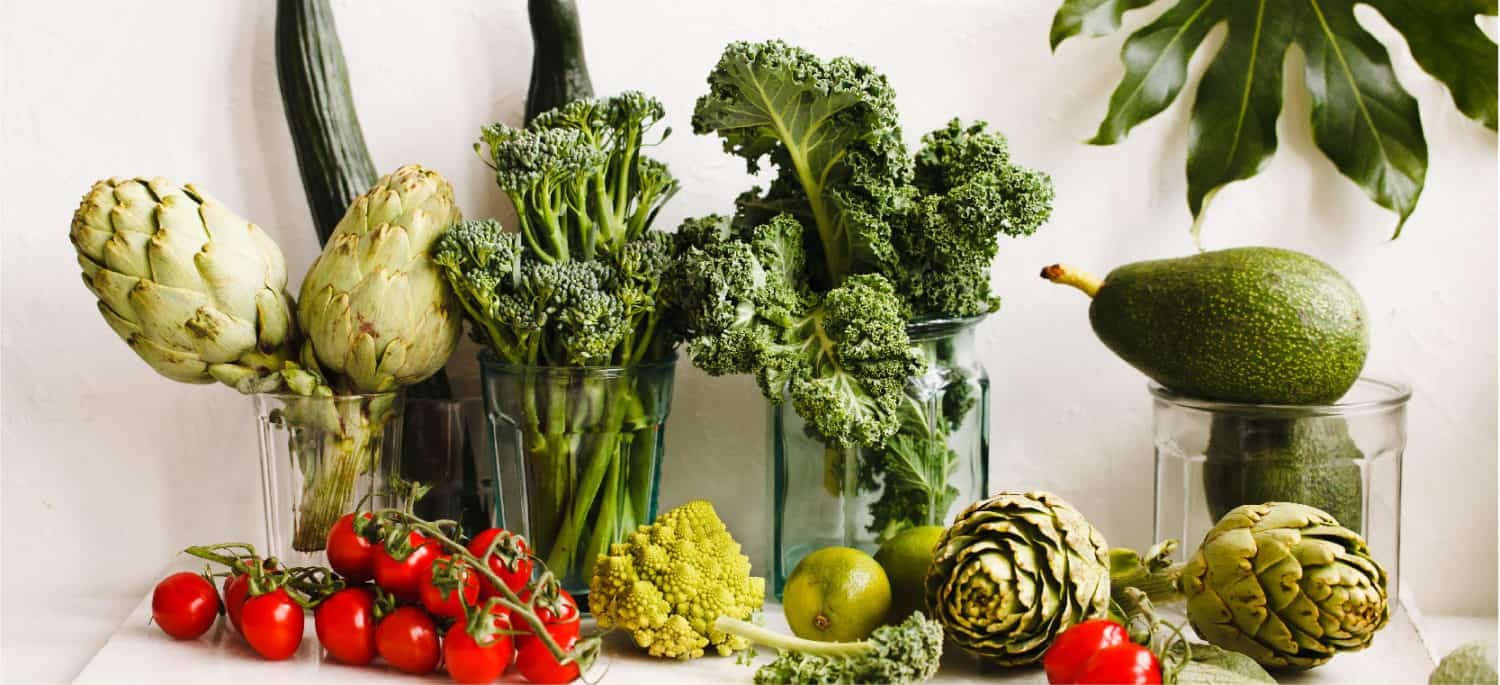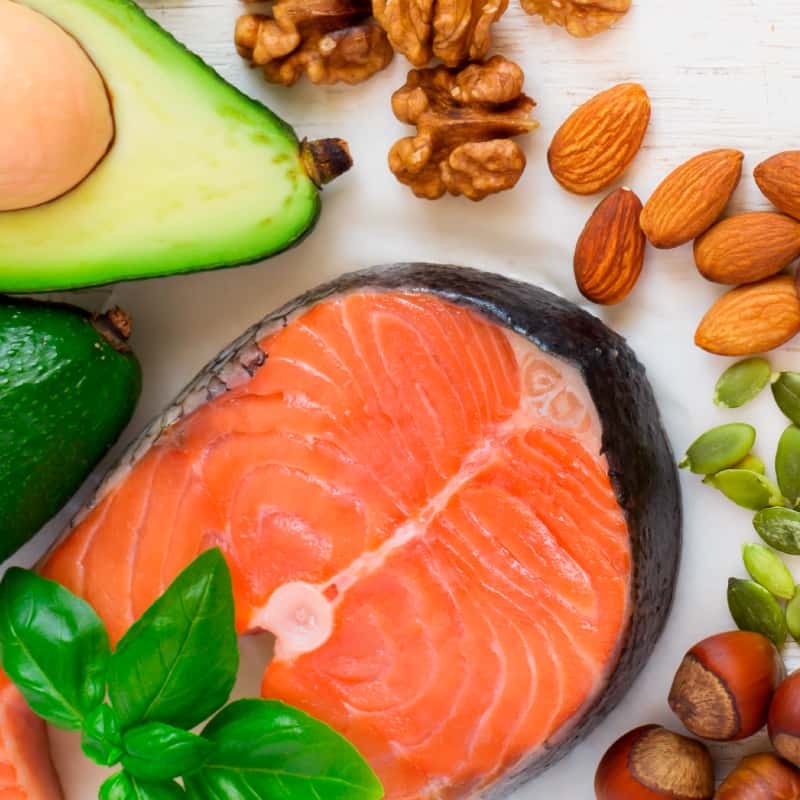This Dr. Axe content is medically reviewed or fact checked to ensure factually accurate information.
With strict editorial sourcing guidelines, we only link to academic research institutions, reputable media sites and, when research is available, medically peer-reviewed studies. Note that the numbers in parentheses (1, 2, etc.) are clickable links to these studies.
The information in our articles is NOT intended to replace a one-on-one relationship with a qualified health care professional and is not intended as medical advice.
This article is based on scientific evidence, written by experts and fact checked by our trained editorial staff. Note that the numbers in parentheses (1, 2, etc.) are clickable links to medically peer-reviewed studies.
Our team includes licensed nutritionists and dietitians, certified health education specialists, as well as certified strength and conditioning specialists, personal trainers and corrective exercise specialists. Our team aims to be not only thorough with its research, but also objective and unbiased.
The information in our articles is NOT intended to replace a one-on-one relationship with a qualified health care professional and is not intended as medical advice.
Are Foods with Oxalates (Oxalic Acid) Bad for You?
January 2, 2024

It’s no secret that foods like spinach, broccoli and sweet potatoes are brimming with health benefits. But did you know that they’re also high in oxalates?
Oxalates are organic compounds that can accumulate in the kidneys, increasing the risk of painful kidney stones. But while a low-oxalate diet was once the go-to treatment for kidney stones, emerging research now shows that you may not need to cut oxalates out of your diet altogether.
So what are oxalates, how can they impact your health, and do you really need to scale back on your intake? Here’s what you need to know.
What Are Oxalates?
Oxalates, also referred to as oxalic acid, are a natural compound found in a variety of food sources. Some of the most common oxalates in food can be found in plant sources such as fruits, vegetables, nuts and seeds. Oxalate can also be produced naturally by your own body.
Oxalates often bind to minerals such as calcium and are excreted out of the body through the stool. However, high amounts of oxalate can build up in the kidneys, leading to the formation of kidney stones.
Kidney stones occur when hard mineral deposits form within the inner lining of the kidneys, causing symptoms like stomach pain, nausea and vomiting. Although there are several different types of kidney stones, calcium oxalate stones are considered one of the most common.
A traditional kidney stone diet involves limiting consumption of oxalate foods to prevent these painful mineral deposits from forming. However, many oxalate foods are also rich in other nutrients and often double as fiber-rich, high magnesium foods as well.
Rather than cutting these foods out of your diet altogether, recent research has found that increasing your intake of calcium could be just as effective for the prevention of kidney stones.
Are Oxalates Bad for You?
Oxalates are considered an antinutrient, which means that they can bind to certain minerals in the body and prevent their absorption. Calcium, in particular, binds to oxalate and is excreted out of the body, which could be problematic for those consuming a high-oxalate, low-calcium diet.
However, most research generally suggests that enjoying high-oxalate foods in moderation as part of a healthy diet is unlikely to cause any adverse effects on health. Additionally, soaking or cooking foods can significantly reduce oxalate levels to maximize nutrient absorption.
Kidney stones are another common concern associated with oxalate consumption. This is because high amounts of oxalates can accumulate in the kidneys, contributing to the formation of kidney stones.
While decreasing your intake of high-oxalate foods could potentially help reduce the risk of kidney stones, many of these foods are rich in other important vitamins and minerals that your body needs.
Furthermore, studies show that pairing oxalate foods with calcium-rich foods could promote the excretion of oxalate out of the body, without having to nix any oxalate-rich foods from your fridge.
High-Oxalate Foods
Oxalates are found in most plant foods in varying amounts, including many fruits, veggies, nuts and seeds. Meanwhile, most animal products like meat, fish and poultry contain only trace amounts of oxalates.
Here are some of the top foods high in oxalates:
- Fruits: blackberries, blueberries, raspberries, kiwis, tangerines, figs
- Vegetables: broccoli, rhubarb, okra, leeks, beets, potatoes, eggplant, sweet potatoes, zucchini, carrots, celery, olives, rutabaga, chicory parsley, peppers
- Leafy Greens: spinach, escarole, beet greens, kale, collards, Swiss chard
- Nuts and Seeds: almonds, cashews, peanuts, sesame seeds
- Legumes and Soy Products: miso, tofu, soy milk, green beans and kidney beans
- Grains: bulgur, corn grits, wheat germ, whole wheat bread, amaranth, buckwheat and quinoa
- Beverages: cocoa/chocolate, chocolate milk, black tea, instant coffee, dark beers
Some foods also contain moderate amounts of oxalates and can be incorporated into a low-oxalate diet. Here are a few medium-oxalate foods:
- Fruits: apples, oranges, prunes, pears, pineapple, peaches, apricots
- Vegetables: artichoke, fennel, canned peas, asparagus, tomato, lima beans, Brussels sprouts, mustard greens, turnips, onions, parsnips, corn
- Beverages: brewed coffee, carrot juice, tomato juice, orange juice
Low-Oxalate Diet
If you’re looking to learn how to prevent kidney stones, a low-oxalate diet is often recommended, especially if you’re susceptible to kidney stones.
A low-oxalate diet generally provides less than 40–50 milligrams of oxalates per day. In addition to limiting your intake of oxalates, staying well-hydrated, moderating your protein intake and increasing calcium consumption are other important aspects of a low-oxalate diet. Typically, it’s recommended to follow the diet for at least 3–6 weeks to see if your symptoms improve.
Here are a few simple steps for how to follow a low-oxalate diet:
1. Moderate Consumption of High-Oxalate Foods
Minimizing your intake of high-oxalate foods from the list above could potentially help prevent kidney stones.
However, there’s no need to cut these foods from your diet altogether. In fact, recent research suggests that increasing your intake of calcium could boost oxalate excretion and may be more effective against kidney stones.
2. Enjoy a Variety of Low-Oxalate Foods
There are plenty of nutrient-dense foods that are low in oxalates and can be enjoyed as part of a healthy, well-rounded diet. Some of the top foods that you can include in a low-oxalate diet include:
- Fruits: bananas, cherries, mangoes, grapefruit, melons, grapes, nectarines, papaya
- Vegetables: cauliflower, kohlrabi, radishes, chives, mushrooms, cucumbers, cabbage, peas, avocados
- Proteins: meat, poultry, seafood and eggs
- Dairy Products: milk, cheese, yogurt, butter
- Grains: rice, corn bran, rye bread, egg noodles
- Beverages: water, herbal tea, wine
- Herbs and Spices: rosemary, oregano, basil, turmeric, ginger, dill
3. Increase Your Intake of Calcium-Rich Foods
Oxalate and calcium bind together, which can help prevent them from forming kidney stones. Therefore, it’s recommended to pair oxalate foods with foods high in calcium, including sardines, yogurt, kefir, cheese and almonds.
Ideally, aim for 2–3 servings of calcium-rich foods per day.
4. Drink Plenty of Water
Water can help to flush materials out of the kidneys to help protect against kidney stones. In order to stay well-hydrated, try drinking at least eight 8-ounce glasses of water or fluids per day.
5. Moderate Protein Intake
Eating too much animal protein can contribute to the formation of kidney stones. In a healthy diet, between 10–35 percent of total daily calories should be from protein, which can come from sources like meat, fish and poultry as well as legumes, nuts and seeds.
6. Cook/Soak Oxalate Foods
Boiling and steaming can help reduce oxalate levels in some foods, including greens and other veggies. Try boiling vegetables for 6–10 minutes or steaming them for several minutes until soft.
Soaking grains and legumes can also help decrease oxalate content while also minimizing levels of other antinutrients like phytate, protease inhibitors, lectins and tannins. For help with soaking and sprouting foods, check out this handy sprout guide.
7. Try Supplementation
Some people choose to take calcium citrate, NAG (N-Acetyl-Glucosamine), CMO (cetyl myristoleate) or a combination of these supplements to deal with oxalic acid-related side effects or pain.
To help manage your symptoms, you can ask your healthcare provider whether or not these might be helpful for you.
Final Thoughts
- Oxalates are natural compounds found in a variety of plant foods, including many fruits, vegetables, nuts and seeds.
- In high amounts, oxalates can accumulate in the kidneys, causing kidney stones to form.
- While following a low-oxalate diet was once recommended to prevent kidney stones, recent research suggests that eating more calcium-rich foods to increase oxalate excretion may be more effective.
- Enjoying a variety of low-oxalate foods, drinking plenty of water, cooking or soaking oxalate foods and limiting your intake of animal proteins may also be beneficial.






